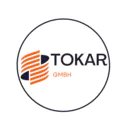Description
Type II—This cement possesses moderate resistance to sulfate attack because of certain limitations on composition. Sometimes called moderate-heat cement, it is intermediate between Type I and the low-heat Type IV cement. If moderate heat of hydration is desired, however, the optional limit on heat of hydration should be invoked when specifying or ordering.
- Type III—High-early-strength portland cement is often produced by grinding Type I clinker finer or by altering the chemical composition of the cement.
- Type IV—Low-heat portland cement. Not currently made in the United States and limited in production elsewhere.
- Type V—Sulfate-resisting portland cement with appropriate limits on composition.
In addition, portland cement can also be specified under ASTM C1157 (Standard Performance Specification for Hydraulic Cement) as:
- Type GU—general use.
- Type HE— high early strength.
- Type MS—moderate sulfate resistance.
- Type HS—high sulfate resistance.
- Type MH—moderate heat of hydration.
- Type LH—low heat of hydration.
- Type II—This cement possesses moderate resistance to sulfate attack because of certain limitations on composition. Sometimes called moderate-heat cement, it is intermediate between Type I and the low-heat Type IV cement. If moderate heat of hydration is desired, however, the optional limit on heat of hydration should be invoked when specifying or ordering.
- Type III—High-early-strength portland cement is often produced by grinding Type I clinker finer or by altering the chemical composition of the cement.
- Type IV—Low-heat portland cement. Not currently made in the United States and limited in production elsewhere.
- Type V—Sulfate-resisting portland cement with appropriate limits on composition.
In addition, portland cement can also be specified under ASTM C1157 (Standard Performance Specification for Hydraulic Cement) as:
- Type GU—general use.
- Type HE— high early strength.
- Type MS—moderate sulfate resistance.
- Type HS—high sulfate resistance.
- Type MH—moderate heat of hydration.
- Type LH—low heat of hydration.
- Type II—This cement possesses moderate resistance to sulfate attack because of certain limitations on composition. Sometimes called moderate-heat cement, it is intermediate between Type I and the low-heat Type IV cement. If moderate heat of hydration is desired, however, the optional limit on heat of hydration should be invoked when specifying or ordering.
- Type III—High-early-strength portland cement is often produced by grinding Type I clinker finer or by altering the chemical composition of the cement.
- Type IV—Low-heat portland cement. Not currently made in the United States and limited in production elsewhere.
- Type V—Sulfate-resisting portland cement with appropriate limits on composition.
In addition, portland cement can also be specified under ASTM C1157 (Standard Performance Specification for Hydraulic Cement) as:
- Type GU—general use.
- Type HE— high early strength.
- Type MS—moderate sulfate resistance.
- Type HS—high sulfate resistance.
- Type MH—moderate heat of hydration.
- Type LH—low heat of hydration.
- Portland Cement 525
- Portland 50kg cement
- Composite Portland Cement
- Grey Portland Cement
- Alumina Cement Refractory Cement
- Fireproof Cement
Production Capacity:
Not informed
Delivery Timeframe:
Within 30 Days
Incoterms:
CFR - Cost and Freight
CIF - Cost, Insurance and Freight
CIP - Carriage and Insurance Paid to
DDP - Delivered Duty Paid
DDU - Delivered Duty Unpaid
EXW - Ex Works
FCA - Free Carrier
FOB - Free on Board
Packaging Details:
Not informed
More about
TOKAR GMBH
50-100
Employees
200K - 500K
Sales volume (USD)
100%
% Export sales
Year
Established
Business type
- Importer / Trading Company
- Representative / Agent
- Distributor / Wholesaler
- Business Service
Keywords
- Food
- Beverages
- Cosmetics
- electronics
- Rice
- cooking Oil
- Coffee
- Cars
- Trucks
- Plastic products Ver Mais
Contact and location
-
Alessandro wenzel
-
+49 xxxxxxxx
-
Frankfurt / Frankfurt | Germany





















